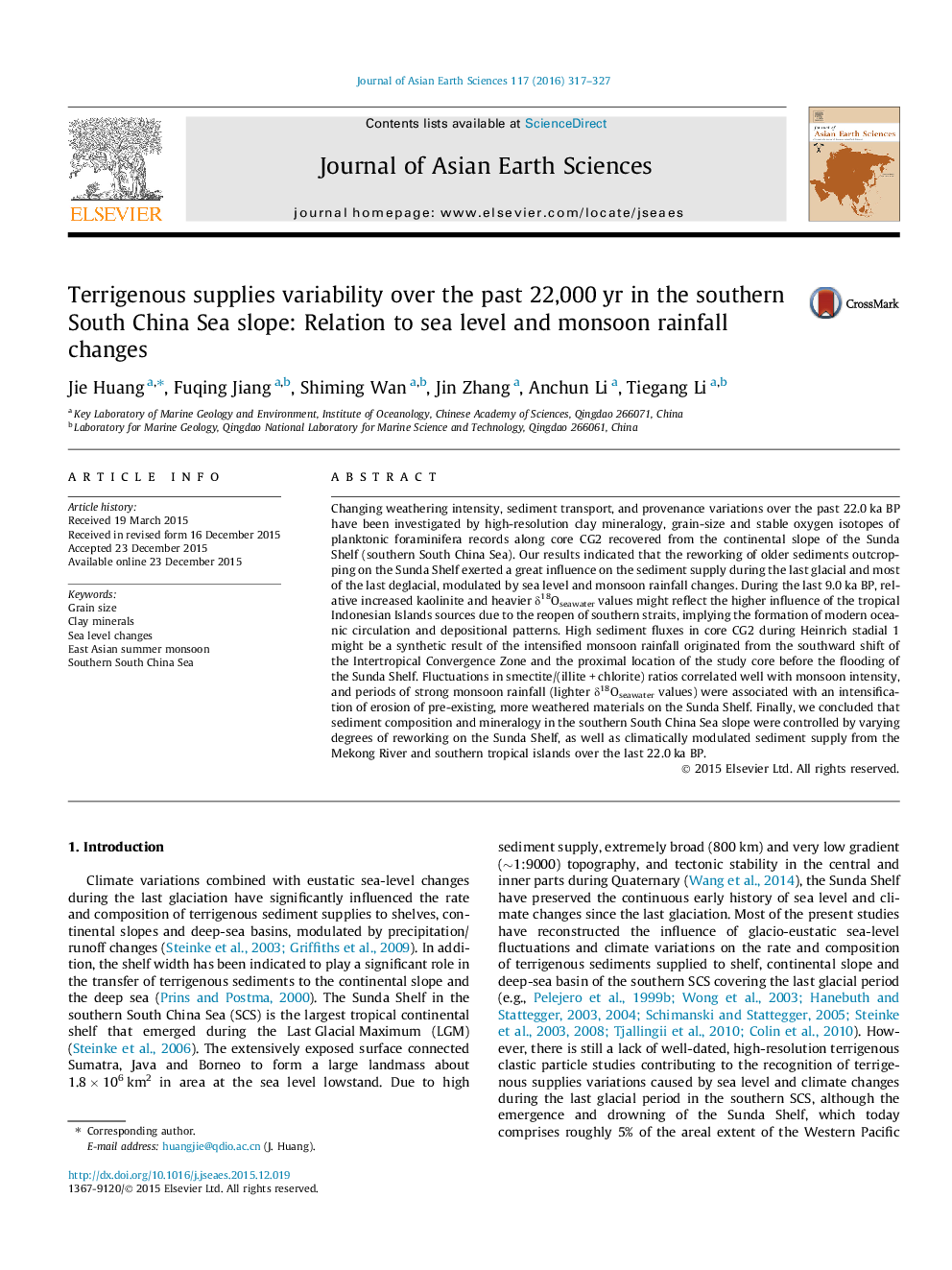| کد مقاله | کد نشریه | سال انتشار | مقاله انگلیسی | نسخه تمام متن |
|---|---|---|---|---|
| 4730192 | 1640354 | 2016 | 11 صفحه PDF | دانلود رایگان |
• Clay mineral results indicate a mixture of multiple sources for the southern SCS slope.
• Reworking of older sediments on the Sunda Shelf exert a great influence on the sediment supply.
• Modern oceanic circulation and depositional pattern were formed in the southern SCS since 9.0 ka.
• Monsoon intensity is the primary control on the degrees of reworking on the Sunda Shelf.
• Intensified monsoon rainfall and the proximal location result in high sediment fluxes during HS1.
Changing weathering intensity, sediment transport, and provenance variations over the past 22.0 ka BP have been investigated by high-resolution clay mineralogy, grain-size and stable oxygen isotopes of planktonic foraminifera records along core CG2 recovered from the continental slope of the Sunda Shelf (southern South China Sea). Our results indicated that the reworking of older sediments outcropping on the Sunda Shelf exerted a great influence on the sediment supply during the last glacial and most of the last deglacial, modulated by sea level and monsoon rainfall changes. During the last 9.0 ka BP, relative increased kaolinite and heavier δ18Oseawater values might reflect the higher influence of the tropical Indonesian Islands sources due to the reopen of southern straits, implying the formation of modern oceanic circulation and depositional patterns. High sediment fluxes in core CG2 during Heinrich stadial 1 might be a synthetic result of the intensified monsoon rainfall originated from the southward shift of the Intertropical Convergence Zone and the proximal location of the study core before the flooding of the Sunda Shelf. Fluctuations in smectite/(illite + chlorite) ratios correlated well with monsoon intensity, and periods of strong monsoon rainfall (lighter δ18Oseawater values) were associated with an intensification of erosion of pre-existing, more weathered materials on the Sunda Shelf. Finally, we concluded that sediment composition and mineralogy in the southern South China Sea slope were controlled by varying degrees of reworking on the Sunda Shelf, as well as climatically modulated sediment supply from the Mekong River and southern tropical islands over the last 22.0 ka BP.
Journal: Journal of Asian Earth Sciences - Volume 117, 1 March 2016, Pages 317–327
